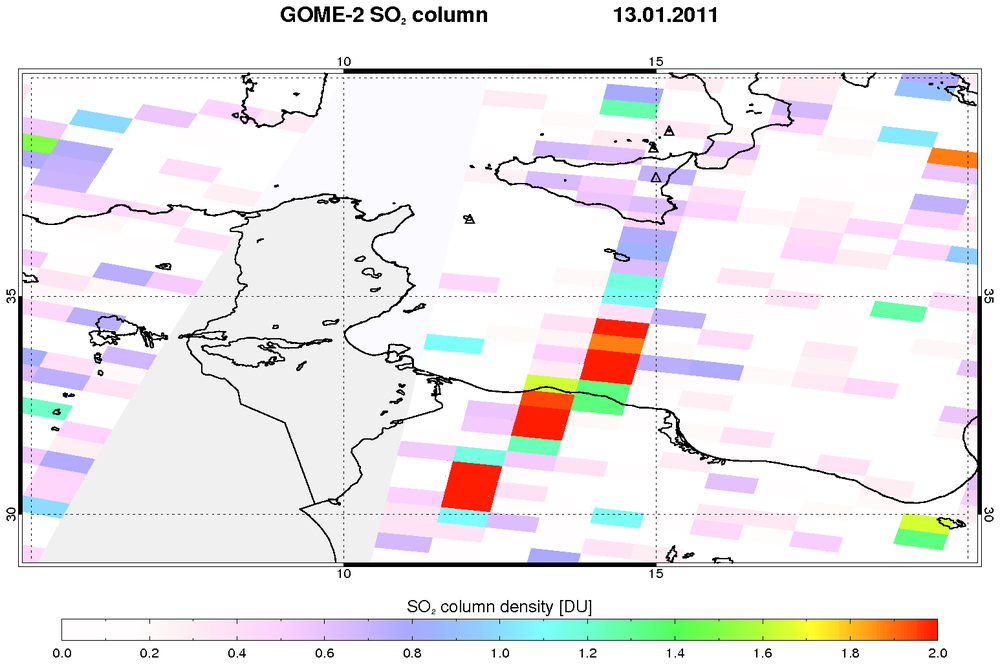GOME-2 instrument detects volcanic SO2 plume from Etna eruption
Sulfur dioxide (SO2) is an excellent indicator for volcanic activity. Satellite observations of volcanic SO2 are used for aviation safety and early warning of volcanic activity. The SO2 retrieval for the GOME-2 satellite instrument is performed in near-real time at DLR Oberpfaffenhofen at the Remote Sensing Technology Institute (IMF) and German Remote Sensing Data Center (DFD) allowing the data to be distributed to users less than 2 hours after the measurements. An SO2 plume from the recent eruption of Mount Etna was detected by GOME-2 on 13 January 2011.
On the evening of 12 January 2011 a small eruption occurred at Mount Etna, Italy. Mount Etna is Europe’s most active volcano, the last eruption occurred in May 2008 lasting for several days. The recent eruption started around 9 pm on 12 January with the emission of lava that traveled down the eastern flank of the volcano. The eruption lasted for only about two hours, also emitting volcanic ash that caused the airport in Catania to shut down over night. The Etna eruption emitted a sulfur dioxide (SO2) plume that was detected by the atmospheric sensor GOME-2 (Global Ozone Monitoring Experiment) on the EUMETSAT satellite, MetOp-A, the following morning. The plume had traveled southward from the volcano towards Africa. Due to the low eruption duration and intensity the erupted SO2 amount were fairly small with maximum values ranging around 4 DU (The amount of sulfur dioxide is measured in Dobson Units (DU), the number of molecules in a square centimeter of the atmosphere) and no more SO2 could be detected the following day.
The Global Ozone Monitoring Experiment-2 (GOME-2) is one of the new-generation European instruments carried on board of MetOp, which has been jointly established by ESA and EUMETSAT. GOME-2 will continue the long-term monitoring of atmospheric ozone and trace gases, such as sulfur dioxide (SO2), started in 1995 by GOME on ERS-2 and since 2002 by SCIAMACHY on Envisat. The operational processing and routine analysis of GOME-2 SO2 data are based on the differential optical absorption spectroscopy in the UV wavelength range around 320 nm.

